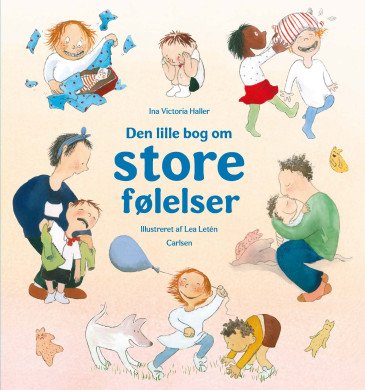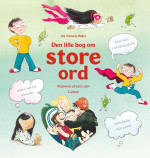Synopsis
The emotional development of children needs to be supported and guided in a similar way to linguistic and motoric development. The role of the adult is to help the child understand and regulate emotions and this book provides a helping hand in how to go about this important task. This is done by looking at an active day in a fictitious family
Pelle, Ronja and their parents are going to Sophie's birthday. We follow the family throughout the day and experience all the feelings that arise in the encounter with other adults and children. The book includes suggestions for conversations and play, enabling the child to address the emotions actively. It is written by a child psychologist in collaboration with two children's NGOs in connection with the project "Block Bullying."
Personal note from the author
“Dear reader,
Picture books often contain a wealth of emotions, that can be difficult to discuss with a child. Perhaps there is uncertainty about how much the child actually understands, or maybe one doesn’t think to put the story’s emotions into words, because they are so clear to the adult reader.
This book will make it easier for you to talk about feelings with the child you’re reading it with. And not just while reading this book, but other picture books as well.
I hope that this book will inspire you to talk about feelings in all aspects of life, not just while reading. A child’s emotional development should be supported and guided, just as the linguistic development is helped by the repetition of words, and motility and balance are developed when you hold a child’s hand to help it stand. In much the same way, adults are tasked with helping a child understand and control their emotions.
The target audience for this book, is children aged 1 1/2 - 6 years old, their parents, teachers and other care-givers. This may seem like a wide range, but children learn and develop differently. As a toddler, the child begins to understand complex emotions, it develops empathy, and starts to verbalize feelings. This is a good time to start talking about emotions, if you haven’t already.
Likewise, the book can be used to assist children with social/emotional issues, that make it difficult for the child to interact with others, because of special challenges with regards to understanding other’s emotions and intentions. These challenges could stem from ADHD or autism spectrum disorders.
The Little Book on Big Emotions stages younger children’s varied emotions. Every new double-page presents a new feeling, and with every new feeling, a suggestion on how you can talk about, and increase the child’s understanding of that feeling. Not all the suggestions and questions are meant to be used in every case. They are merely meant as an inspiration to start a conversation. Hopefully, the child will spontaneously continue the conversation and a natural dialogue about the child’s experiences and feelings can begin. How long the dialogue will be, depends on the child’s age, linguistic, and emotional development.
The book is meant to be read again and again. And as a reader you will be able to follow the child’s growing awareness of different emotions and feel how the conversation grows longer. With smaller children the conversation should be rooted in the pictures. You can ask the child to point in response to different questions, if he or she does not yet have words for the feelings. If the child can’t remember or describe being angry, tell him or her about an episode that you remember. It will be easier to understand the emotion if the child is reminded of a time when it felt that way itself.
The book can be read from beginning to end, since one storyline connects the different emotions. This may help the child understand that time can give rise to a flood of emotions, positive and negative, that are changed and resolved by new inputs. This is an especially important lesson to learn with regards to negative emotions, so the child understands, that these feelings will eventually go away.
The book can also be used as a reference, if there is a certain emotion you wish to discuss. In this case you can use the situation described in the book, and the child’s own experience to learn about the emotion in question.
Read more about the emotional development of small children in the back of the book, for more ideas on how to support this development.










